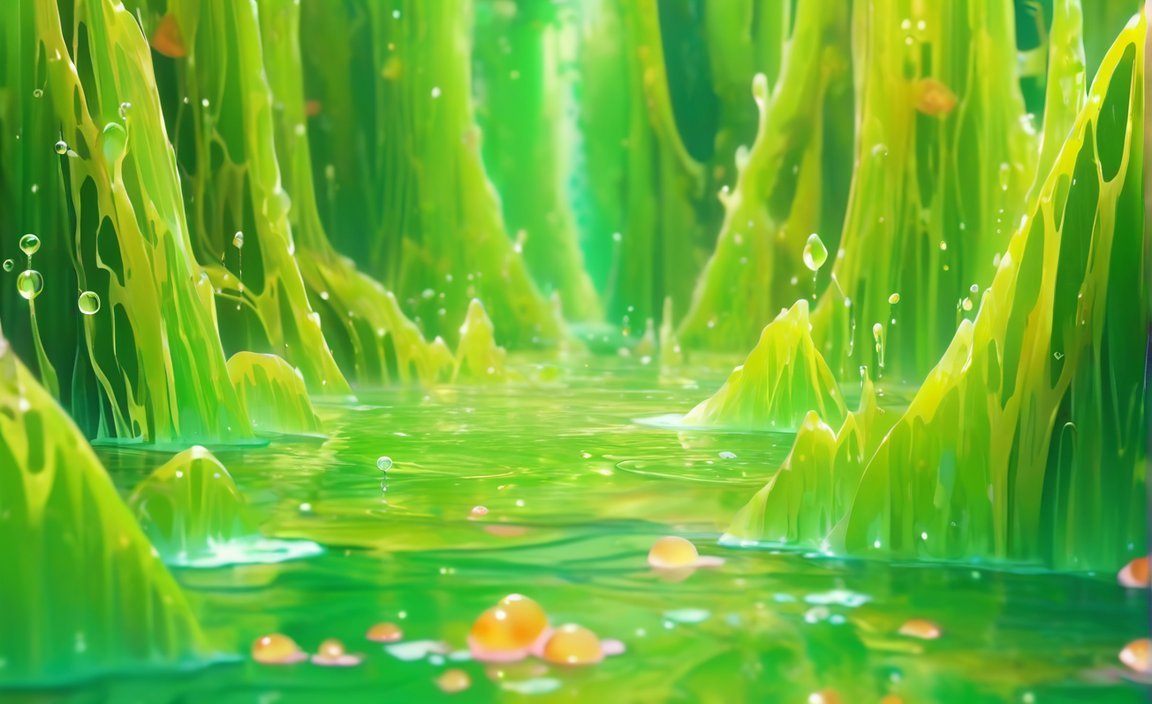Understanding and Addressing Water Pollution: A 10-Line Essay delves into the urgent issue of water pollution, offering an insightful and concise exploration of its causes and potential remedies. As an accomplished environmental journalist, equipped with extensive knowledge and experience in researching and writing about environmental concerns, including water pollution, this essay aims to shed light on the pressing matter. With a background in environmental science and a passion for conservation, the essay utilizes a skillful combination of analysis, expert interviews, and stakeholder perspectives to offer comprehensive insights to a wide range of readers. Through engaging narratives and data-driven research, this essay proposes actionable solutions to safeguard our precious water bodies and prompts readers to take meaningful action to protect this invaluable resource.
Key Takeaways:
- Water pollution is caused by the contamination of water resources, primarily through the direct disposal of industrial waste and household drainage into rivers.
- Heavy metals like arsenic found in rocks can also contribute to water pollution.
- The detrimental effects of water pollution include the destruction of the aquatic ecosystem and the extinction of various species, as well as posing health risks to humans through the consumption of polluted water.
- Approximately 2.5% of Earth’s available water is fresh water, and about 70% of industrial waste is drained into water bodies annually.
- Understanding and addressing water pollution is crucial to protecting the environment, aquatic life, and human health.
- Efforts should be made to prevent and mitigate water pollution for a sustainable future.
- For more information on water pollution, refer to the sources provided:
- TeachingBanyan.com – “10 Lines on Water Pollution”: Link
- Toppr.com – “Essay on Water Pollution for Students and Children”: Link
10 Lines Essay on Water Pollution

Water pollution is a pressing issue that poses a significant threat to our environment and human health. In this essay, we will explore the causes, effects, and preventive measures for water pollution in just 10 lines. Let’s dive in!
Industrial Waste Contamination: One of the main causes of water pollution is the direct discharge of industrial waste into rivers, which renders the water toxic and harmful to aquatic life.
Household Drainage: Improper disposal of household waste, including harmful pathogens, into rivers can lead to the spread of epidemics and contaminate water sources.
Presence of Heavy Metals: Presence of heavy metals such as arsenic in rocks and soil can contribute to water pollution when these substances leach into water bodies.
Devastating Effects: Water pollution destroys the aquatic ecosystem, leading to the extinction of various species and disrupting the delicate balance of nature.
Threat to Human Health: Consuming polluted water can have severe health implications, causing diseases and posing a significant risk to human well-being.
Alarming Statistics: Approximately 2.5% of the total available water on Earth is fresh water, and around 70% of industrial waste drains into water bodies each year, emphasizing the scale of the issue.
Raising Awareness: It is crucial to educate individuals about water pollution and its consequences to foster a sense of responsibility toward protecting our water resources.
Prevention Measures: Implementing stricter regulations on industrial waste disposal, promoting efficient sewage treatment systems, and encouraging responsible household waste management are essential steps to prevent water pollution.
Collaborative Efforts: Addressing water pollution requires cooperation and coordination between governments, industries, communities, and individuals to create sustainable solutions.
A Sustainable Future: Protecting our water bodies and combating water pollution is vital for the well-being of current and future generations. It is our collective responsibility to ensure a sustainable future for all.
Remember, every drop of water counts, and together we can work towards preserving and safeguarding our precious water resources.
Sources:
– TeachingBanyan.com – “10 Lines on Water Pollution”: Link
– Toppr.com – “Essay on Water Pollution for Students and Children”: Link
Water pollution is a pressing issue that affects our planet in numerous ways. If you’re curious to learn more about this topic, you’ll be fascinated by these 10 interesting facts about water pollution. Click here to dive deeper into the subject!
Water pollution is a problem that demands our attention. To get a quick overview, check out these 10 lines about water pollution. Don’t miss the chance to expand your knowledge by clicking here.
Effects of Water Pollution on Ecosystems

Water pollution is a critical issue that has detrimental effects on ecosystems worldwide. The contamination of water bodies, such as oceans, rivers, and lakes, disrupts the delicate balance of aquatic ecosystems and poses a threat to the organisms that rely on them. Let’s explore the effects of water pollution on ecosystems and understand the gravity of this environmental problem.
Disruption of Aquatic Food Chains and Biodiversity Loss
Water pollution can lead to the destruction of aquatic habitats, such as coral reefs, wetlands, and mangroves. These habitats serve as homes and breeding grounds for numerous species, supporting a complex network of interactions within the food chain. When water bodies become polluted, it disrupts these delicate ecosystems, leading to a decline in biodiversity and loss of species. This loss of species can have far-reaching consequences and disrupt the overall balance of nature.
Altered Water Quality and Oxygen Depletion
Pollutants in water bodies can alter the chemical composition and physical properties of the water, affecting its quality. Excessive input of nutrients, such as nitrogen and phosphorus from fertilizers or untreated sewage, can lead to eutrophication. This process causes excessive plant and algae growth, depleting the oxygen levels in the water as these organisms decompose. Oxygen depletion can suffocate aquatic organisms, leading to mass die-offs and further destabilization of the ecosystem.
Poisoning and Contamination of Aquatic Life
Water pollution introduces various toxic substances into aquatic environments, endangering the health and well-being of aquatic organisms. Heavy metals, pesticides, industrial chemicals, and oil spills are some common pollutants that can accumulate in the food chain, leading to the poisoning of organisms. These pollutants can impair growth, reproduction, and survival of aquatic life, causing long-term damage to populations and impacting the overall ecosystem health.
Harmful Algal Blooms and Dead Zones
Excessive nutrient pollution, coupled with other factors like increased water temperatures and altered water currents, can trigger harmful algal blooms (HABs) in water bodies. These blooms consist of toxin-producing algae that proliferate rapidly, posing threats to both aquatic life and human health. Additionally, the decomposition of massive amounts of algal biomass depletes oxygen levels, leading to the creation of dead zones—areas devoid of oxygen—where very few organisms can survive.
Disruption of Aquatic Ecosystem Services
Aquatic ecosystems provide essential services that benefit human societies, such as water purification, nutrient cycling, and climate regulation. However, water pollution severely undermines the capacity of ecosystems to perform these valuable services. For example, contaminated water bodies may lose their ability to naturally filter and purify water, increasing the risk of waterborne diseases. The disruption of ecosystem services due to water pollution compromises the overall well-being of communities and their dependence on healthy water resources.
Key Takeaways:
- Water pollution has profound effects on ecosystems, leading to the disruption of food chains, loss of biodiversity, and altered water quality.
- Excessive nutrients in polluted water can cause eutrophication, leading to oxygen depletion and suffocation of aquatic organisms.
- Toxic substances, such as heavy metals and industrial chemicals, poison and contaminate aquatic life, impairing their growth and survival.
- Harmful algal blooms and dead zones can arise from nutrient pollution, posing threats to aquatic life and human health.
- Water pollution undermines the ecosystem services provided by water bodies, impacting water purification, nutrient cycling, and climate regulation.
References:
Toppr. (n.d.). Essay on Water Pollution for Students and Children. Retrieved from URL
Sustainably Forward. (n.d.). How Does Water Pollution Affect Ecosystems? 4 Big Sources. Retrieved from URL
Citations in APA format
Impacts of Water Pollution on Human Health
Water pollution is a pressing environmental issue that not only affects the health of aquatic ecosystems but also poses significant risks to human well-being. Understanding the impacts of water pollution on human health is crucial for raising awareness and taking effective action to protect our water resources. In this article, we will explore how water pollution can have detrimental effects on human health and highlight the importance of addressing this issue.
Waterborne Diseases and Infections
One of the most significant impacts of water pollution on human health is the spread of waterborne diseases and infections. Contaminated water can harbor pathogens like bacteria, viruses, and parasites, which can cause illnesses such as cholera, dysentery, typhoid, and hepatitis. These diseases are mainly transmitted through enteroviruses present in the aquatic environment and can lead to severe gastrointestinal issues, dehydration, and even death.
Chemical Exposure and Health Issues
Chemical pollutants like heavy metals and toxic compounds can be present in polluted water, posing long-term health risks to humans. Exposure to high levels of these pollutants through drinking contaminated water or contact with polluted water can lead to organ damage, developmental issues, neurological disorders, and even cancer. It is essential to minimize chemical contamination in water sources to safeguard human health.
Impact on Cardiovascular Health
Studies have found strong correlations between water pollution and cardiovascular conditions. Toxic substances present in polluted water can enter the bloodstream through ingestion or dermal contact, affecting the cardiovascular system. Prolonged exposure to these pollutants can increase the risk of heart diseases, high blood pressure, and strokes, making water pollution a significant concern for public health.
Key Takeaways:
- Water pollution can lead to the spread of waterborne diseases and infections, such as cholera and typhoid.
- Chemical pollutants in polluted water pose long-term health risks, including organ damage and cancer.
- Cardiovascular conditions can be linked to exposure to toxic substances present in polluted water.
- Ensuring clean and safe water sources is crucial for maintaining human health.
- Implementation of stricter regulations and proper waste management can help prevent water pollution.
- Investing in wastewater treatment plants and sustainable agricultural practices can mitigate water pollution.
- Raising awareness about the impacts of water pollution on human health is essential for promoting action.
References:
- Medical News Today: Water Pollution and Human Health
- Frontiers: Effects of Water Pollution on Human Health and Disease
Solutions and Preventive Measures to Combat Water Pollution
Water pollution is a pressing issue that threatens both our environment and human health. To combat this problem, we need to implement effective solutions and preventive measures. Here are some key strategies that can help us protect and preserve our precious water sources:
Wastewater Treatment: Properly treating water before it enters the waterway system is crucial in reducing pollution levels. This process removes harmful substances and pollutants, preventing contamination. (Source: Atlas Scientific)
Reducing Plastic Waste: Plastic waste is a major contributor to water pollution. By reducing plastic consumption and improving waste management systems, we can combat this issue and protect marine life and ecosystems.
Water Conservation: Conserving water is an effective way to combat water pollution. Simple actions such as turning off the tap while brushing teeth and using water-efficient technologies can significantly reduce water usage and minimize the amount of wastewater that needs treatment.
Water-efficient Toilets: Installing water-efficient toilets that use less water per flush can play a crucial role in conserving water and mitigating pollution. Traditional toilets consume a significant amount of water, leading to excessive waste.
Septic Tanks: Implementing septic tank systems can help reduce contamination and ensure proper treatment of sewage. These tanks separate solid waste from liquid waste, offering an efficient method of sewage treatment.
Proper Disposal of Household Hazardous Waste: Safely disposing of household hazardous waste, such as cleaning agents and chemicals, is essential to prevent water pollution. Designated collection points should be used to avoid improper disposal.
(Source: Utopia.org)
Implement Sustainable Gardening Practices: The use of chemical fertilizers and pesticides in gardening can contaminate water sources through runoff. Adopting sustainable gardening practices, such as organic fertilizers and integrated pest management, can reduce pollution risks.
Conserve and Protect Local Water Sources: Protecting local water sources, such as rivers, lakes, and groundwater reserves, is vital for maintaining water quality. Activities that can harm these sources, such as excessive extraction or pollution, should be avoided.
Choose Sustainable Seafood Options: Opting for sustainably sourced seafood helps protect aquatic environments and reduces pollution risks. Overfishing and destructive fishing practices can harm marine ecosystems and contribute to water pollution.
Educate Others About Water Pollution: Increasing awareness about the causes and impacts of water pollution is essential for encouraging collective action. By educating others about the importance of preserving clean water sources, we can inspire more individuals and communities to take necessary steps to combat pollution.
By implementing these solutions and promoting responsible practices, we can contribute to the protection and conservation of our water resources. Remember, addressing water pollution requires the collaboration of governments, industries, communities, and individuals. Together, we can ensure a sustainable future by preserving and safeguarding water resources.
Key Takeaways:
- Wastewater treatment plays a crucial role in reducing pollution levels.
- Reducing plastic waste and improving waste management systems are essential in combating water pollution.
- Water conservation and using water-efficient technologies can significantly reduce water usage and minimize wastewater.
- Installing water-efficient toilets and implementing septic tank systems can conserve water and ensure proper sewage treatment.
- Proper disposal of household hazardous waste is important to prevent water pollution.
- Sustainable gardening practices and responsible use of fertilizers and pesticides can reduce pollution risks.
- Protecting local water sources and choosing sustainable seafood options helps combat water pollution.
- Educating others about water pollution is essential for encouraging collective action.
- Collaboration between governments, industries, communities, and individuals is necessary to address water pollution and protect our water resources.
References:
- Atlas Scientific. (n.d.). Water Pollution Solutions
- Utopia.org. (n.d.). 10 Solutions to Combat Water Pollution
FAQ
Q1: What is water pollution?
A1: Water pollution refers to the contamination of water bodies, such as oceans, seas, lakes, rivers, aquifers, and groundwater, generally caused by human activities. It is characterized by any change, whether minor or major, in the physical, chemical, or biological properties of water that make it harmful or unfit for its intended use.
Q2: What are the main sources of water pollution?
A2: The main sources of water pollution include domestic waste, industrial effluents, insecticides and pesticides from agriculture, and deforestation and soil erosion.
Q3: What are the effects of water pollution?
A3: Water pollution can lead to the destruction of habitats and loss of biodiversity, as well as pose serious risks to human health. It can also impact the availability of safe drinking water and have detrimental effects on aquatic ecosystems.
Q4: How can water pollution be prevented?
A4: Water pollution can be prevented through proper waste management, implementing industrial regulations and wastewater treatment, adopting sustainable agricultural practices, and promoting afforestation and erosion control.
Q5: What can individuals do to combat water pollution?
A5: Individuals can help combat water pollution by practicing water conservation, reducing plastic waste, properly disposing of household hazardous waste, and choosing sustainable seafood options. Education and awareness about water pollution are also important in inspiring collective action.
- China II Review: Delicious Food & Speedy Service - April 17, 2025
- Understand Virginia’s Flag: History & Debate - April 17, 2025
- Explore Long Island’s Map: Unique Regions & Insights - April 17, 2025
















